How a migrant influx is causing tensions in one of the most Hispanic cities in the U.S.
- Oops!Something went wrong.Please try again later.
Less than a week after crossing the U.S.-Mexico border and catching a flight to Florida, Joseliel Montilla, his wife and their five-year-old daughter waited on a cold February morning outside the Department of Children & Families outpost in Hialeah where their family members had taken turns spending the night — not because they had nowhere else to go, but because they wanted to beat the daily rush on the office where new arrivals apply for refugee benefits with the state.
Montilla, originally from the province of Artemisa, says his family fled “misery and persecution in Cuba.” Now, they are making a new home in Hialeah, following in the footsteps of Montilla’s sister, who arrived here two years prior and rented a two-bedroom apartment with her husband on the east side of the city to accommodate their recently arrived relatives from the island.
Amid a historic rush on the border, the family is part of an unquantifiable group of migrants who have recently chosen to settle in this majority-Cuban city of roughly a quarter-million people in northwest Miami-Dade County. But their presence is increasingly becoming a source of division, with Hialeah’s mayor laying blame on new arrivals for some of the city’s problems, including a lack of affordable housing.
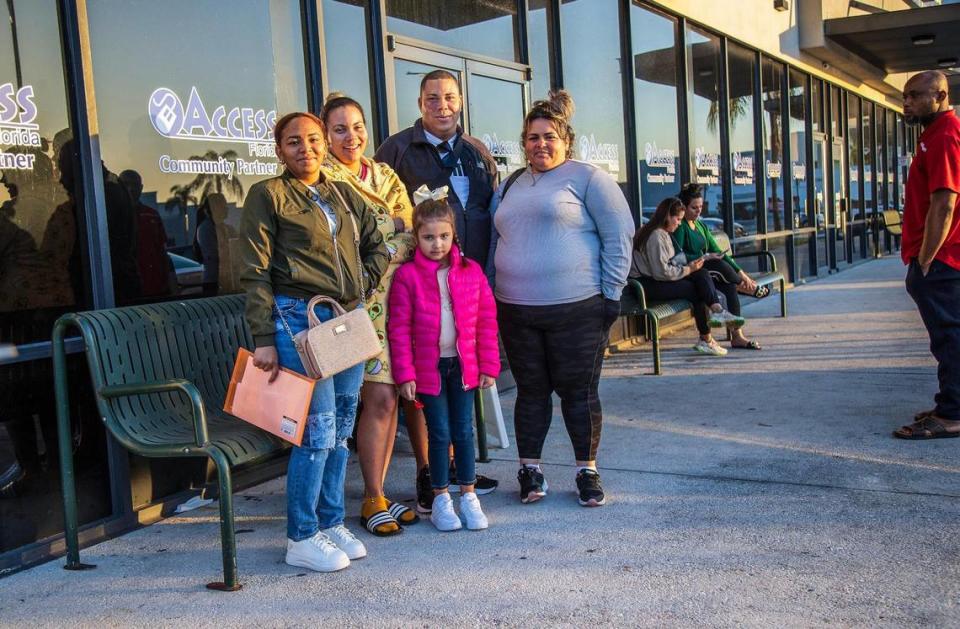
Mayor Esteban Bovo, Jr. has claimed that as many as 80,000 Cubans have arrived in Hialeah over the last two years, stretching the city’s resources. He says it’s a plausible estimate when considering that more than 420,000 migrants have come to the U.S. from Cuba during that time, which he likened to a “Mariel on steroids,” referring to the 1980 mass-flotilla from Cuba to Florida.
“Not all come here. But if you assume that at least 75% of them end up in South Florida, it’s reasonable to assume that half of that ends up here in Hialeah,” Bovo told Herald reporters.
The truth is, no one has been able to say how many migrants have actually come to Hialeah to reunite with relatives and friends or to find familiarity in a new country. Even the mayor acknowledges that he is guessing.
But the presence of newly arrived migrants is reflected in the lines of families at the local Children and Families offices applying for relief; in the trucks full of workers looking for jobs outside local businesses, and in the makeshift shelter of a local church that houses migrants with nowhere else to go.
City officials — who will hold the first of several “immigration workshops” on Monday in an effort to better understand the facts surrounding Hialeah’s migrant influx — are investigating whether a spike in population is leading to an increase in crime, and whether newly arrived Cubans are the cause of a housing crunch that has driven property owners to park campers outside their homes to rent as housing.
“We have lived peacefully for 10 years until my neighbors decided to rent and connect two trailers for the new residents of Hialeah, the migrants,” Tamara Reyes, 52, told the City Council last month. “If this is not controlled, it will be time to move from Hialeah.”
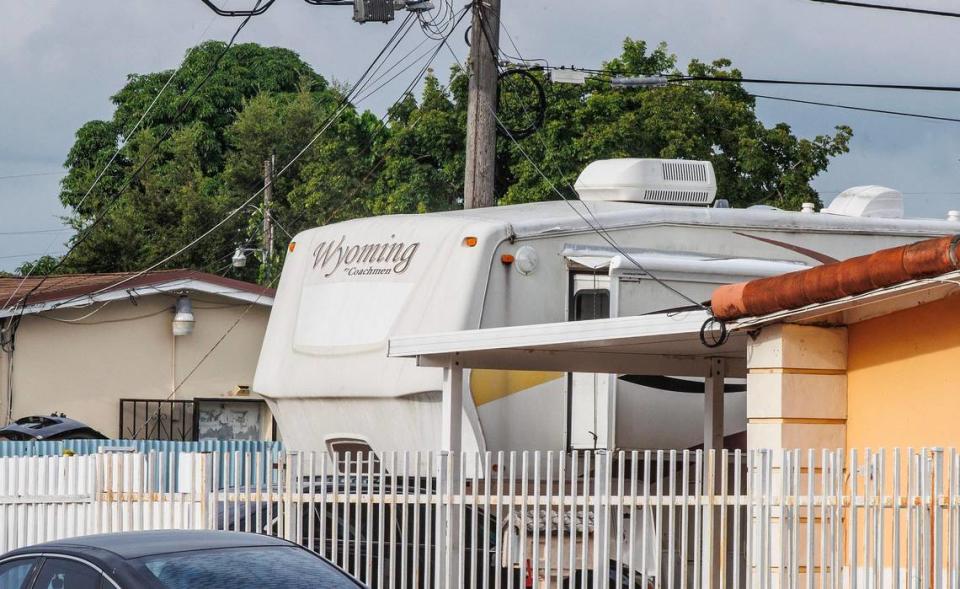
Hialeah approves restrictions for RVs. Will it stop people from renting them as housing?
A Unique Struggle
Hialeah’s growing pains aren’t unique in the U.S., where border towns have been overrun and homeowners in places like New York and Chicago have lashed out as migrant shelters pop up in their neighborhoods.
But Hialeah is a city where immigrants and refugees — Cubans, in particular — have built a new future after escaping economic and political oppression. Three-quarters of its residents have roots in Cuba, and 95% of the population identifies as Hispanic or Latino, making Hialeah one of the cities with the highest concentrations of Hispanic residents in the country. The mayor’s father fought in the CIA-backed Bay of Pigs invasion of Cuba and was a political prisoner.
It is also a Republican stronghold. In November, when former President Donald Trump held a presidential campaign rally down the street from Hialeah City Hall, the crowd cheered when he pledged to launch “the largest domestic deportation operation in American history” if he is once again voted into the White House. Notably, three-quarters of the city’s population was born outside the United States. At the same rally, Bovo announced that the City Council was about to rename the city’s main street after the former president.
Before the city’s affordable-housing task force meeting last month, Bovo opened a press conference by saying that a “total collapse of the southern border” is to blame for an increase in the illegal renting of RVs as housing and the “skyrocketing, literally 100% overnight,” of rents. On Thursday evening, Bovo shared a headline from far-right outlet Breitbart about the high levels of immigration at the southern border on his personal Instagram account, with an image of President Joe Biden and the caption: “This is affecting cities across the country. America is under assault.”
Still, his rhetoric is normally softer than Trump, who has said immigrants are “poisoning the blood of America,” and more cautious than that of New York City Mayor Eric Adams, who has claimed that the migrant crisis “will destroy” his city.
“It would be very, very hypocritical of myself to say that people are not welcome, because we’re not down with that,” Bovo told the Miami Herald and el Nuevo Herald in a recent interview. “But do we need the infrastructure and the ability to accommodate people? Yes. Do we have it? No.”
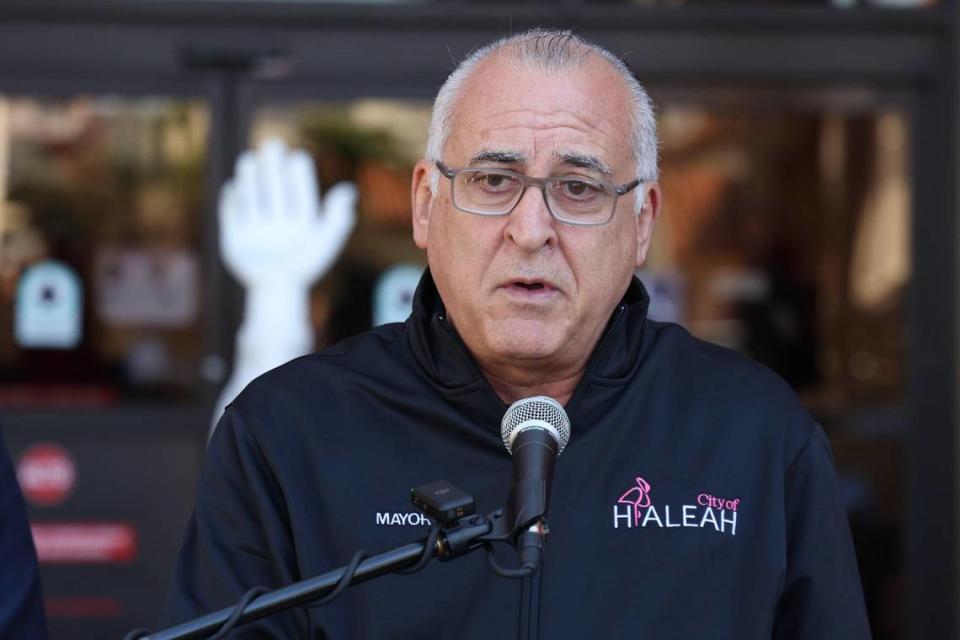
Hialeah turns to developers, attorneys to help tackle its affordable housing crisis
Growing Pains
Hialeah does have some symptoms of a city bursting at the seams.
Bovo’s administration says school district data shows the enrollment of foreign-born students in area schools has increased. The local DCF office has begun requiring appointments to avoid long lines. And the City Council just passed a new law to restrict the rental of RVs to cut down on illegal housing — a problem they claim is so severe they have shut off power and water to homeowners who ignore the law.
“They live in the shadows. We’ll never know” if migrants are occupying the RVs, Bovo told Herald reporters. “It could be a mixture of long-term residents that have been displaced because of the spike in rents, but it also could be folks that are newly arrived that are looking for their slice or their foot in the door to start building their American dream.”
An early-morning drive around Hialeah — where the average rent has been estimated at $2,058 for a one-bedroom apartment — reveals people sleeping in their cars outside shopping centers. One of them, Guillermo Colina, a 62-year-old man from Cuba who says he has lived in the city since 1996, told reporters from the driver’s seat of his sedan that he’s been sleeping in his car for nine months after getting hurt on the job.
“It’s the first time this has happened to me,” said Colina, who lives in the car with another long-term Hialeah resident from Cuba who left to work before sunrise to earn a salary that won’t cover a rental unit.
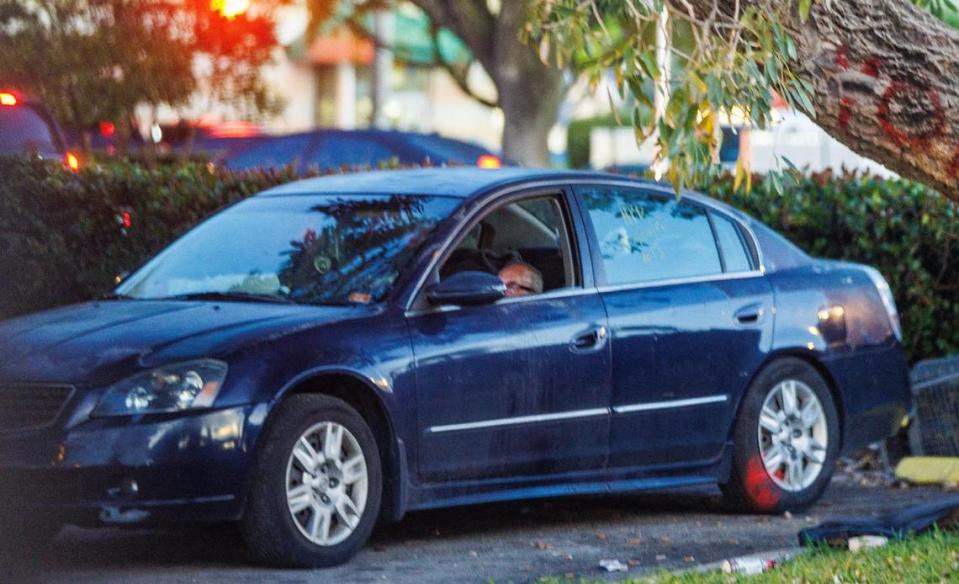
At least one Hialeah church, Iglesia Rescate, has been housing newly arrived migrants with nowhere to live since 2022.
“There are no affordable apartments,” says Yuniel Salinas, a 42-year-old window installer, originally from the province of Las Tunas in Cuba who moved to Hialeah five years ago before leaving for Miami Gardens to seek cheaper housing.
Is that due to a migrant influx? Or do new arrivals make for easy scapegoats?
A Miami-Dade County analysis of Department of Homeland Security statistics does show that, since June 2023, more than 58,000 migrants processed at the U.S.-Mexico border — mostly Cubans, Venezuelans, Haitians and Guatemalans — indicated that South Florida was their intended destination.
But immigration attorney Wilfredo Allen questions the accuracy of Bovo’s claim that 75% of Cubans entering the U.S. settle in South Florida, saying that many Cubans opt for other states where jobs are more plentiful and housing more accessible.
“I see from my clients that many of the Cubans who are entering the U.S. go to Kentucky, Texas, Iowa and even Nebraska, mainly in small towns with large slaughterhouses and food factories,” said Allen. “There is job availability, and housing in those states is cheaper.”
It’s also true that rents in Hialeah have been sky-high for years. The average resident pays more than two-thirds of monthly income on housing, a 2020 Florida International University report found.
“The majority of people who come to Hialeah are from other parts of the country, Spanish speakers who feel comfortable being able to go to the supermarket and talk to someone who speaks Spanish to them,” said Melissa Aponte, a Realtor who has lived in Hialeah since she was six years old.
Norma Uriostegui, a representative of the Miami Workers Center, a nonprofit that advocates for tenants, told the Herald that the evicted Hialeah residents they have worked with came to the country over a decade ago.
“We reject the notion that people and families seeking refuge in the United States are to blame for the housing crisis,” the Miami Workers Center said in a statement.
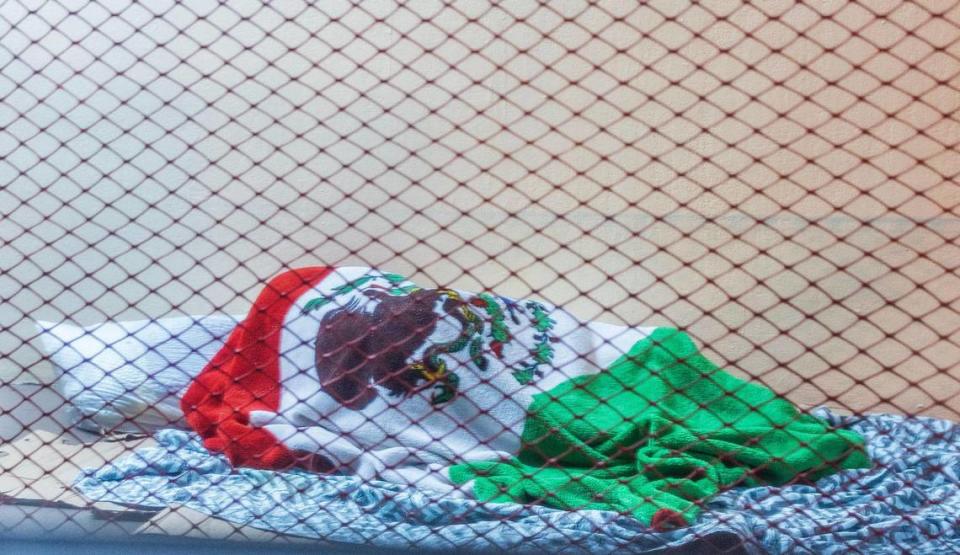
More Precise Data
Bovo believes that the data available to track migrants heading to Hialeah is incomplete at best, and says the federal government has been stingy with its information. The Homeland Security statistics reviewed by Miami-Dade County don’t include people who crossed undetected between ports of entry, or those who came to the U.S. via immigration programs or to Florida on rickety boats. And Bovo has said that the Census does not capture the realities of his city. The federal government has acknowledged that there was a “statistically significant undercount” of the Hispanic or Latino population, among other minority groups, in the 2020 Census.
Now, the city is attempting to get a harder count on how many migrants have moved to Hialeah and is planning a series of immigration workshops starting Monday to explore what Bovo’s chief of staff has described as the impact of “open-border policies” on the city.
Officials say they plan to collaborate with U.S. Sen. Marco Rubio and area U.S. Rep. Mario Diaz Balart, as well as several state and federal agencies, though Bovo’s press director said the mayor’s office hasn’t yet spoken to the federal government about its concerns.
Some new arrivals, like Ener Alonso, a 26-year-old bartender from Matanzas who says he came to the United States two years ago fleeing political persecution, are frustrated by the conversation.
“As a migrant I don’t want the government to support me,” Alonso said on a recent afternoon while picking up clothes at a laundromat. “That’s how many people think. Because they come to work, to do something.”
Bovo says the city is simply trying to manage its affairs.
“They’re welcome. No one is trying to kick anybody out,” he said, arguing that the stress migration placed on Hialeah has been overlooked. “We know what it does in New York and Chicago, we see that all the time, but we don’t know what happens in a place like Hialeah. How do we handle it?”

